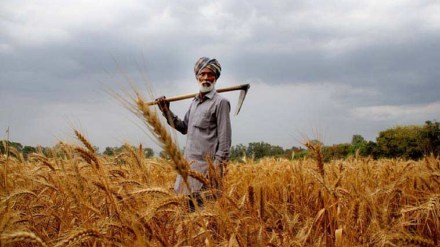Sowing of key rabi crops – wheat, rice, pulses, oilseeds and coarse cereals has started on a brisk note with setting in of the winter months.
Initial data indicate increased acreage for mustard, chana (gram), masur (lentil), jowar, and maize while the wheat and rice planting has been lagging.
According to the agriculture ministry, a total area under all rabi crops was 12.05 million hectare (mh), up from 4% on year on Friday The five-year average rabi crop area is 64.8 mh.
Sowing of pulses and oilseeds in Rajasthan, Madhya Pradesh, Uttar Pradesh has been sown in 3.8 MH and 4.7 MH so far up 1.3% and 9% respectively compared to the same period previous year.
Mustard sowing is up 11.66% at 4.57 MH on year.
Sowing of rice for the winter season has commenced in Tamil Nadu, Andhra Pradesh and Kerala. Similarly the planting of wheat, the key rabi crop has commenced in Madhya Pradesh, Punjab, Uttar Pradesh and Rajasthans.
Wheat is sown in 1.8 MH, which is a 12% decline on year while total estimated area to be covered in the season is 30.73 MH.
Coarse cereals such as jowar and bajra were sown in 0.64 mh against 0.43 mh in the previous year.
These are, however, still early days to make an assessment of the rabi crop as sowing would continue through December.
The government for the season has set a higher wheat production target of a record 114 million tonne (MT) for the 2023-24 crop year against an estimated output of 110.5 MT in 2022-23.
The government is aiming to bring around 60% of the total wheat area under the climate-resistant varieties for dealing with extreme climatic conditions such as the wheat wave and rainfall witnessed just prior to harvesting of crops in the last two years.
The government has set marginally higher foodgrians production targets of 332 MT for 2023-24 crop year (July-June), out of which rabi season will contribute 161.2 MT. The food grains production in 2022-23 was estimated at 329.6 MT.
The government is aiming to increase pulses such as chana (gram) and oilseeds, mainly mustard production in the ongoing season to reduce import dependency of these crops.
In case of chana, which has a share of 50% in the country’s total pulses production 26.05 MT in 2022-23 crop year, the target of a production of 13.65 MT of the pulses variety has been set for 2023-24 crop year.
For mustard, the production target of 13.1 MT has been set for 2023-24 crop against an output of 12.64 MT in 2022-23. The official said the focus will be to reduce the country’s import dependency on edible oil from current level of 56% to 36% in next 5 years
